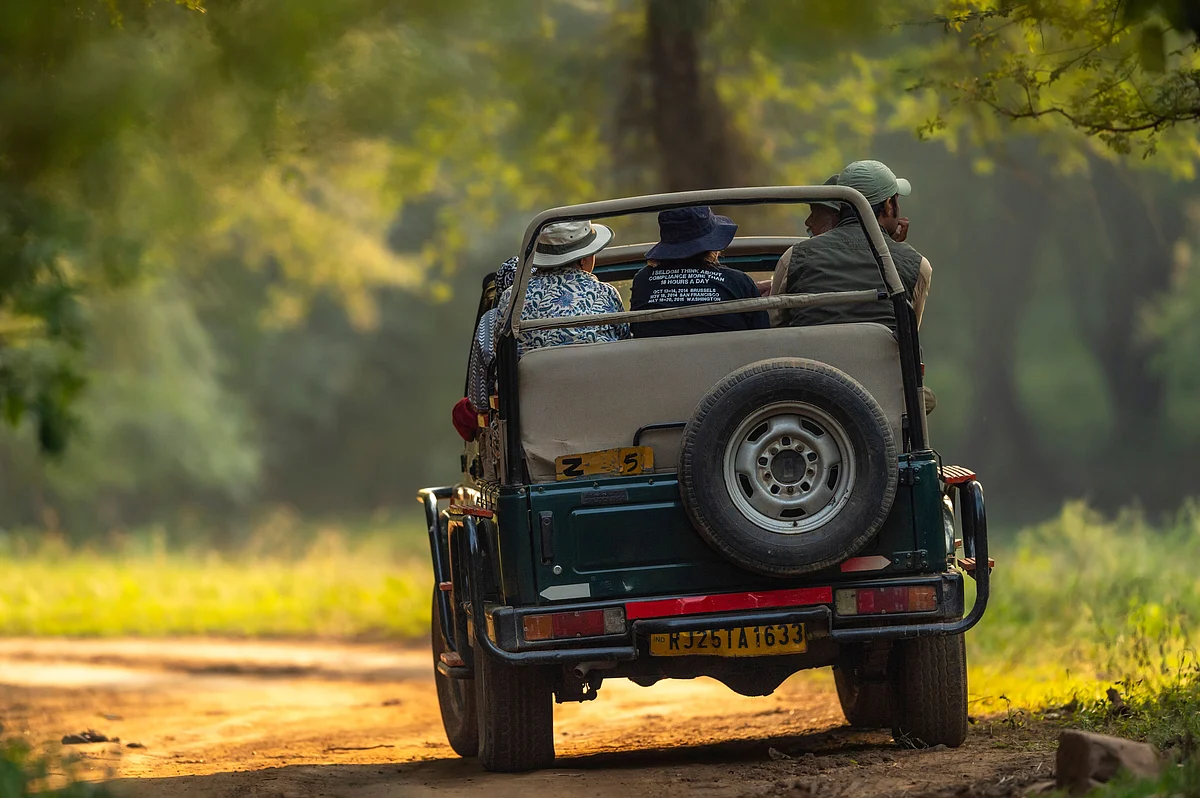The Ramgarh Vishdhari Tiger Reserve in Rajasthan is gearing up to take a major leap forward in wildlife tourism. Starting October 2025, this relatively new reserve will open its core zone for guided tiger safaris, adding depth and diversity to India’s thriving eco-tourism landscape. The forest department has already kickstarted safaris in the buffer zone from June this year, and preparations are now in full swing to welcome visitors deeper into the wilderness where tigers roam more freely.

Spread over an impressive 1500 square kilometres, Ramgarh Vishdhari was declared India’s 52nd tiger reserve in 2022. It covers a dense core of about 482 square kilometres and a buffer area of over 1000 square kilometres. Currently, it is home to six tigers, including two adult males, a female, a sub-adult, and two cubs. Though the numbers may seem modest, they mark the beginning of a long-term conservation success story. The upcoming core zone safari is expected to significantly enhance visibility and engagement with this emerging habitat.
The forest department has submitted a detailed Tiger Conservation Plan to the National Tiger Conservation Authority. This plan includes strategies not just for eco-tourism but also for scientific wildlife monitoring, resource management, and inclusive participation of local communities. According to forest officials, the plan is in the final stages of approval and has not faced any objections, suggesting smooth clearance in the coming weeks.
One of the most exciting elements of the plan is the route of the new safaris. The proposed path will begin at the Peepkhoda gate in Naitpur and journey into untouched parts of the reserve’s interior. The department has outlined four separate safari circuits, each designed to maintain ecological balance and carry a limited number of tourists to avoid overcrowding. Only twenty percent of the entire reserve will be accessible for tourism, ensuring that wildlife remains undisturbed in key breeding and activity areas.
Ramgarh Vishdhari’s core zone offers a unique terrain compared to its more popular counterparts like Ranthambore. With its mix of dry deciduous forests, grasslands, and riverine patches, the reserve supports not only tigers but also leopards, sloth bears, hyenas, jackals, and a variety of bird species. This diversity makes it an ideal destination for photographers, birdwatchers, and conservation-minded travellers.
The expansion is not just a boost for tourists but also a crucial opportunity for the communities surrounding the reserve. The tiger conservation plan includes provisions for creating sustainable income through local employment. Villagers are expected to benefit from jobs as forest guides, safari drivers, hospitality workers, and handicraft vendors. This eco-tourism model aims to align wildlife protection with economic benefits, thereby reducing human-wildlife conflict and creating long-term incentives for conservation.
Plans are also underway to eventually relocate eight villages that fall within the reserve’s boundaries. This would help minimize habitat disturbance and ensure better safety for both humans and animals. Such relocations are part of broader national strategies that have shown success in older reserves like Kanha and Bandhavgarh, where core zones became richer in biodiversity following community resettlements.
By October, as Rajasthan enters the cooler tourist season, Ramgarh Vishdhari is expected to emerge as a fresh highlight on the wildlife tourism circuit. For travellers seeking a quieter, less commercialised tiger safari with promising sightings and deep ecological value, this reserve is an ideal alternative to the more crowded parks.
This opening not only signals a new opportunity for eco-tourism but also reinforces the vision of wildlife conservation through sustainable tourism. Ramgarh Vishdhari may be new to the list, but it is quickly earning its place as a serious contender among India’s tiger destinations. With its breathtaking terrain, growing wildlife population, and thoughtful planning, this reserve is ready to deliver an experience that is raw, rewarding, and responsible.
For more such updates on India’s emerging destinations and travel adventures, follow Travel Moves on Instagram and Facebook.









